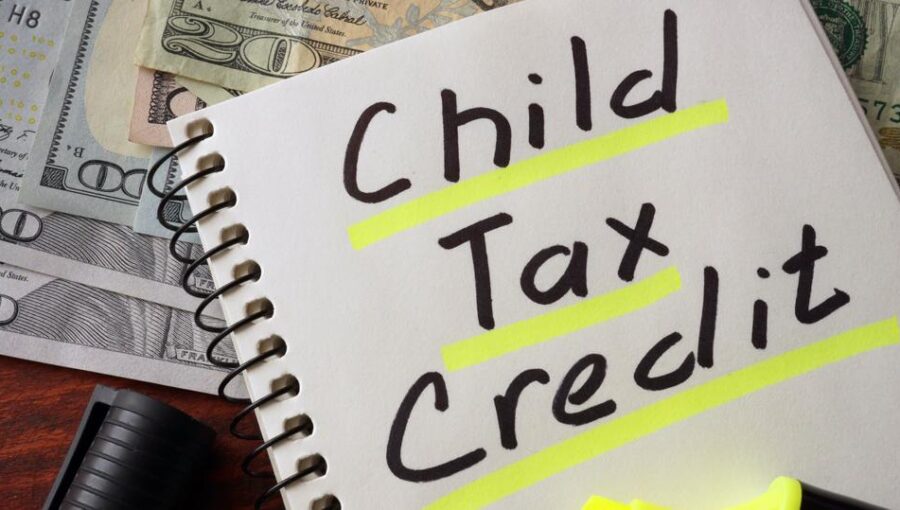
What is the Child Tax Credit?
The Child Tax Credit (CTC) is a tax benefit granted to American taxpayers for each qualifying dependent child. Designed to help taxpayers support their families, this credit was expanded for 2021 to allow taxpayers to take a larger credit. Let’s first discuss how the credit worked for 2020, and then review the changes for 2021.
The Child Tax Credit for the 2020 Tax Year
For 2020, the CTC had a maximum credit of $2,000 per qualifying child who was 16 years old or younger, as long as your income was under certain limits. Of the total allowable credit of $2,000, $1,400 was considered refundable, while the remaining $600 portion was considered nonrefundable. That means that $600 of the total credit could only be used to reduce your tax bill to $0. The $1,400 portion could be used to reduce your tax bill to $0, at which point you would then get a tax refund for any amount left over.
An example of the Child Tax Credit for 2020:
Mark, a single father, filed his 2020 taxes as a Single filer and claimed his son, Jason, who was 10 years old at the end of 2020. Mark’s income was $50,000 for the year and was under the income limit to qualify for the full $2,000 credit. Consequently, he qualified for the full $2,000 credit against his tax bill.
The Child Tax Credit for the 2021 Tax Year – What’s Changed?
For 2021, the maximum credit was increased to $3,000 per qualifying child if the dependent was between the ages of 6 and 17 at the end of 2021. The maximum credit is $3,600 per qualifying child if that dependent was 5 years old or younger at the end of 2021. Additionally, the entire credit is now refundable. This means the entire credit can be used to first reduce your tax bill to $0, and then used to receive a tax refund for any amount left over.
Income limits for receiving the full credit:
- $150,000 for those filing as Married Filing Jointly
- $112,500 for those filing as Head of Household
- $75,000 for all other filers
Income limits for receiving a partial credit. (Note: If your income is higher than the below limit for your filing status, you are not entitled to the CTC at all)
- $440,000 for those filing as Married Filing Jointly
- $240,000 for all other filers
An example of the Child Tax Credit for 2021:
Example 1
Mark filed his 2021 taxes as a Single filer and claimed his son, Jason, who was 11 years old as of 12/31/21. Mark’s income was $65,000 for the year. Consequently, he qualified for the full $3,000 refundable credit against his tax bill.
Example 2
Frank & Jessica, a couple that files as Married Filing Jointly, filed their 2021 taxes and claimed their daughter, Jane, who was 4 years old at the end of 2021. Frank & Jessica’s combined income for 2021 was $450,000. Consequently, they don’t qualify for any portion of the 2021 Child Tax Credit.

Advanced Payments of the 2021 Child Tax Credit
In addition to changes to the credit itself, the IRS issued advanced payments on a monthly basis during 2021 to those eligible taxpayers that were expected to claim the credit when filing their 2021 tax return. This meant that individuals looking to get the credit when filing their 2021 return could receive the financial support during 2021 rather than having to wait until 2022 to file their taxes to receive the credit.
Key Points to consider regarding Advanced Payments
- The IRS sent out a total of 6 monthly advanced payments starting 07/15/2021 and ending on 12/15/2021
- If the IRS determined you were eligible to receive advanced payments, you were automatically enrolled to receive those advanced payments! You must have opted out of the program, if you wanted to do so.
- Any advanced payments received during 2021 do not count as taxable income
- If you received any advanced payments at all during 2021, the IRS will send a letter to you in January 2022. This letter – titled Letter 6419 – will provide important tax information regarding the receipt of those payments. Please make sure to keep this letter for your records and provide it to your tax return preparer!
- To estimate how much in advanced payments an individual should receive, the IRS used information from the taxpayers’ 2020 tax return. If no 2020 tax return had been filed, the IRS used the 2019 tax return.
- These payments were sent out by the IRS using the same mechanism as was used when sending out stimulus payments
What Advanced Payments mean for your 2021 Tax Return
Receiving any advanced credit payments during 2021 will influence your 2021 tax return. If you received advanced payments, you will need to calculate the difference between what you received in advanced payments during 2021 and the total amount of the credit you’re eligible to receive for the 2021 tax year.
Scenario 1: You received less in Advanced Payments then the total amount of the credit you’re eligible for
If you ended up receiving less in payments then the amount of the credit that you’re eligible for, there’s good news! You will receive the difference as a refundable tax credit on your 2021 return.
Example
Jason and Jackie received advanced payments totaling $1,500 during the year in 2021 from the IRS, based on information from their 2020 return. When they completed their 2021 return in 2022, they found that they were entitled to a total Child Tax Credit of $5,000. The difference between the total credit amount of $5,000 and what they already received in advanced payments of $1,500 will be a credit on their 2021 return – a credit of $3,500!
Scenario 2: You received more in Advanced Payments then the total amount of the credit you’re eligible for
If you end up receiving more in advanced payments then the total amount of the allowable credit that you’re eligible for, you may need to pay the difference as an additional tax on your 2021 return.
Example
Frank received advanced payments totaling $6,000 during the year in 2021 from the IRS, based on information from his 2020 return. When he completed his 2021 return, he found that he was only entitled to a total Child Tax Credit of $3,000. The difference between the total credit amount of $3,000 and what he already received in advanced payments of $6,000 might need to be paid back as an additional tax on his 2021 return.
Repayment Protection
The IRS instituted repayment protection for qualifying taxpayers who ended up receiving more in advanced payments than the total amount of allowable credit that they were eligible to receive. The repayment protection allows the IRS to exempt a portion of any excess payments you received during 2021 from your 2021 return. There are certain income limits to consider when reviewing eligibility for the repayment protection. Please talk with your tax professional to find out whether you qualify for the repayment protection.
Example
Frank, from the above example, received $6,000 in advanced CTC payments during 2021. While completing his 2021 tax return, he realized that he was only eligible to receive a total credit of $3,000, meaning he was paid an excess of $3,000 that he might have to pay back on his 2021 tax return. He qualified for the IRS’ repayment protection, allowing him to exempt $2,000 of excess CTC payments. Instead of paying back the full $3,000 of excess payments, Frank now only needs to pay back $1,000 of excess payments.
How to claim the Child Tax Credit
To claim the 2021 Child Tax Credit, you will need to file Form 8812 with your 2021 Form 1040. See below for a link to the form.
https://www.irs.gov/pub/irs-pdf/f1040s8.pdf

Do you have questions? Contact us anytime. We offer both in person, virtual or drop off appointments.
https://westridgeaccounting.acuityscheduling.com/
This material has been prepared for informational purposes only, and is not intended to provide, and should not be relied on for, tax, legal or accounting advice. You should consult your own tax, legal and accounting advisors prior to acting on any of the information provided here.


